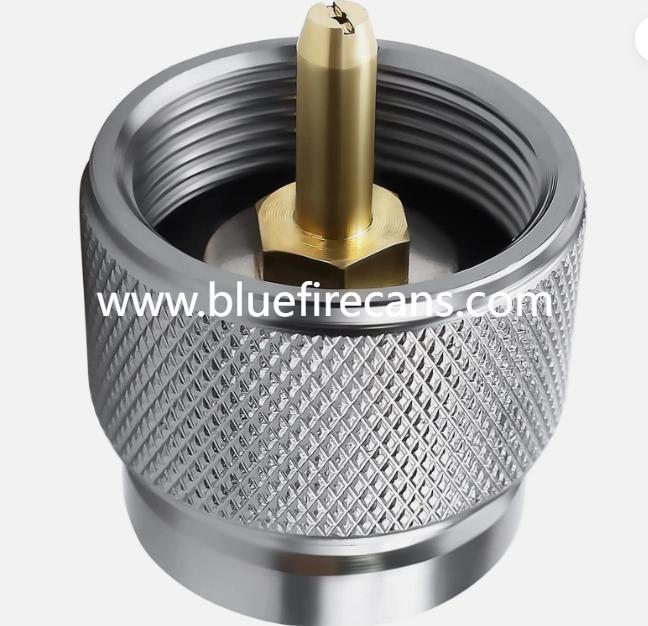How Should Distributors Pack EN417 Cartridges To Reduce Transit Damage

When shoppers, gear makers, and rental services talk about stove compatibility the conversation often points to one practical piece of kit: an EN417 Valve on the cartridge or stove. That standard exists so threaded canisters and fittings behave predictably across many brands and markets, and that predictability underpins safety, straightforward retail advice, and smoother logistics for everyone who stocks or uses portable gas appliances.
At the heart of the matter is a common interface. Many canisters sold for lightweight camping stoves use a self-sealing threaded valve that fits the Lindal style connection; the standard describes the construction and marking requirements for non-refillable metallic cartridges so devices and containers can mate reliably. That means a stove designed for the EN417 thread will seal and disconnect in a consistent way with matching cartridges from different makers, which reduces the number of adapters shoppers must hunt for on a trip.
Compatibility delivers clear benefits to users and retailers. When a regional market converges on a documented interface, stores can stock a smaller set of cartridge types and advise customers confidently about what will fit their stove. For outdoor retailers and rental fleets this reduces returns caused by misfit parts and shortens training time for staff who must answer fitment questions. That simplicity matters more than ever as more people try outdoor cooking and as event organizers demand predictable supplies.
Safety and testing are core reasons the standard is widely adopted. The specification covers material, construction, inspection and marking so that cartridges meet predictable sealing and containment behaviors in normal handling. A uniform valve design reduces surprises at the filling and assembly stages and makes routine leak tests meaningful for quality teams. When manufacturers and suppliers publish handling notes tied to the standard, service technicians and consumers gain a practical set of expectations about storage and safe attachment.
Standardization also helps logistics and international trade. Carriers and distributors prefer clear product declarations and consistent packing methods for pressurized goods. When cartridges share common mounting geometry and documented inspection routines, freight handlers and regional warehouses can follow repeatable palletizing and protection practices that reduce transit damage. For procurement and operations teams, that lowers the chance of rejected loads and last minute restocking headaches.
Manufacturers and valve makers lean on standards to design test routines and to offer options that meet buyer needs. Producers who supply threaded valves and finished canisters to retail partners often perform pressure and leak tests aligned with the standard and publish basic packing recommendations so distributors and shops can stage product without extra handling. When suppliers include clear valve descriptions and valve guard notes, it shortens onboarding for new accounts and reduces confusion at the point of sale.
For field users the standard delivers dependable behavior. A canister that fits correctly seals without extra tools, and the self-sealing feature in common threaded valves reduces drips when changing fuel mid-cook. That ease of swapping matters on group trips and at busy campsites where safety and speed are prime concerns. Still, users should inspect threads and keep valve areas clean because debris or damage can undermine sealing — an expected caveat even with standardized fittings.
Regulatory and market trends make familiarity with the standard practical business sense. As product lines evolve and as alternative cartridge types appear in some markets, retailers and fleet managers that understand the standard can pick assortments that match regional appliance styles and that align with carrier expectations. That foresight reduces the need for emergency sourcing when events or seasonal demand surge.
Practical advice for buyers and users: when shopping, check that cartridges state compatibility or meet the documented standard; ask suppliers for packing and valve protection guidance; run a quick fit test at the counter if possible; and store canisters upright with caps in place until use. These small checks turn abstract standards into real, everyday confidence on the trail and at the checkout.
If your team needs valve compatibility notes, packaged product options, or handling guidance for cartridge families and valve types, suppliers who publish practical instructions and product pages make buying and training simpler. For a selection of valve types, cartridge options, and handling notes from a manufacturer that documents valve choices and packing suggestions, see the supplier portal below. If you want to examine valve types, production notes and component options connected to compliant valve production visit https://www.bluefirecans.com/ .
- Art
- Causes
- Crafts
- Dance
- Drinks
- Film
- Fitness
- Food
- Jogos
- Gardening
- Health
- Início
- Literature
- Music
- Networking
- Outro
- Party
- Religion
- Shopping
- Sports
- Theater
- Wellness

